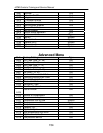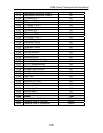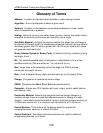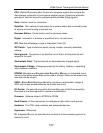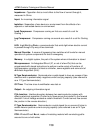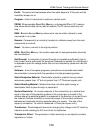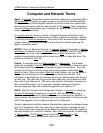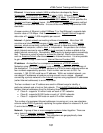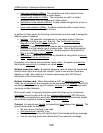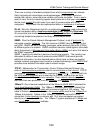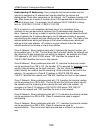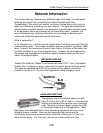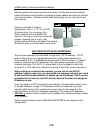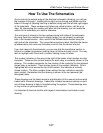
iCOM
Control Training and Service Manual
Ethernet: A local-area network (LAN) architecture developed by Xerox
Corporation in cooperation with DEC and Intel in 1976. Ethernet uses a bus or
star topology and supports data transfer rates of 10 Mbps. The Ethernet
specification served as the basis for the
IEEE 802.3 standard, which specifies the
physical and lower software layers. Ethernet uses the CSMA/CD access method
to handle simultaneous demands. It is one of the most widely implemented LAN
standards.
A newer version of Ethernet, called
100Base-T (or Fast Ethernet), supports data
transfer rates of 100 Mbps. And the newest version,
Gigabit Ethernet supports
data rates of 1
gigabit (1,000 megabits) per second.
Internet: A global network connecting millions of computers. More than 100
countries are linked into exchanges of
data, news and opinions. Unlike online
services, which are centrally controlled, the Internet is decentralized by design.
Each Internet computer, called a
host, is independent. Its operators can choose
which Internet services to use and which
local services to make available to the
global Internet community. Remarkably, this anarchy by design works exceedingly
well. There are a variety of ways to
access the Internet. Most online services,
such as
America Online, offer access to some Internet services. It is also possible
to gain access through a commercial
Internet Service Provider (ISP).
IP address: An
identifier for a computer or device on a TCP/IP network.
Networks using the TCP/IP
protocol route messages based on the IP address of
the destination. The format of an IP address is a 32-bit numeric address written as
four numbers separated by periods. Each number can be zero to 255. For
example, 1.160.10.240 could be an IP address. Within an isolated network, you
can assign IP addresses at random as long as each one is unique. However,
connecting a private network to the
Internet requires using registered IP addresses
(called Internet addresses) to avoid duplicates.
The four numbers in an IP address are used in different ways to identify a
particular network and a host on that network. The
InterNIC Registration Service
assigns Internet addresses from the following three classes.
• Class A - supports 16 million hosts on each of 127 networks
• Class B - supports 65,000 hosts on each of 16,000 networks
• Class C - supports 254 hosts on each of 2 million networks
The number of unassigned Internet addresses is running out, so a new classless
scheme called
CIDR is gradually replacing the system based on classes A, B, and
C and is tied to adoption of
IPv6.
Network: A group of two or more
computer systems linked together. There are
many types of
computer networks, including:
•
local-area networks (LANs): The computers are geographically close
together (that is, in the same building).
161




